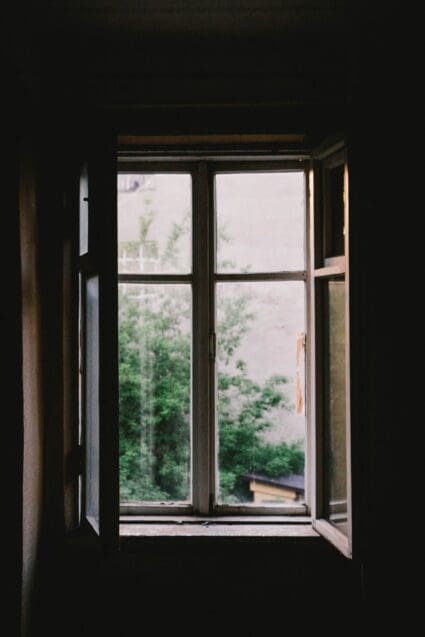Contact Us

How to Make Your Home Disaster Proof
Is Your Home Disaster Proof?
If the last few years have taught us anything, it is to expect the unexpected. From the COVID-19 pandemic and associated supply chain shortages, to wildfires, haboobs and hurricanes—a human catastrophe or a natural disaster are likely to keep coming.
These fires and storms serve as a timely reminder for all of us to make our homes disaster-resistant if not disaster proof. Instead of getting caught off guard, take the initiative and do what you can to prep for whatever might head your way! The following six steps can help you get your house ready for potential disasters, wherever you live:
 1. Reevaluate windows
1. Reevaluate windows
Inside the house, windows are a weak point. They may be broken by the radiant waves from a disaster like a wildfire, which would allow the flames to enter your house. Single-pane models are the most vulnerable, thus it is preferable to choose double-pane models with tempered glass on the exterior.
Although not practical for everyone, those in disaster-prone areas may opt to install roll-down metal file doors that are integrated into the side grooves or roof hangings. Even if you accidentally leave your sliding glass doors and windows open, these will aid in protecting them. Since basement windows are frequently the first to be damaged when calamity strikes, pay particular attention to readying them.
2. Secure large openings
Securing your home’s largest entryways can increase its resistance to a disaster. to To begin with, make sure your garage door is wind-resistant. You can tell how much wind the door can withstand by looking at its label. If it lacks a label, the door might not be wind resistant – if high winds affect your area, you may want to consider purchasing a wind-rated door with steel mounting plates, draft seals, a specific wind lock, and high load.
Residents of storm-prone areas may also want to think about purchasing hurricane shutters. Although they are expensive, they do a great job of keeping the wind out. It may be a good first step to start with a few, and secure the rest of your windows with plywood in advance of a strong storm.
3. Employ anchors
Tree branches, storage buildings, patio furniture, and trampolines can all become dangerous projectiles in high-speed winds. Consider securing them to a stable base using ground anchors and straps to make sure they don’t harm your home. These anchors can also be utilized to stabilize exterior buildings like sheds that are not attached to a foundation.
Chains and cables can also be used to fasten patio furniture and grills to ground anchors. It is also a good idea to plan a yearly inspection of the nearby tree branches and get rid of any fragile ones that could break.
4. Make landscape adjustments
Taking a look around your property for other potential hazards could save you risk and expense in the event of a disaster. If you have wooden decks, be sure to treat them to avoid fire hazards. To prevent embers and fires from spreading, you can do this by installing metal screening around the crawl space beneath the deck. Wooden fence owners should think about putting masonry between the fence and the house or building a metal or masonry fence in its place.

To reduce local waterway pollution and basement flooding, you can also place a barrel beneath the gutter downspout. To prevent rainwater from percolating into the soil beneath the house, homeowners who live in flood-prone locations should maintain a steady moisture level in the foundation. If the foundation crawl spaces reopen following a storm, think about installing a backflow prevention valve with the help of a qualified plumber.
5. Don’t overlook the louvers and vents
Other gaps inside a home are frequently overlooked by those doing disaster prep. For example, big vents under floors and in the attic should be protected against fire damage. Fire dampers using fusible linkages, similar to those found in the heating ducts of large buildings, can safeguard them. You can adhere to the minimum requirement of 14 inch metal wire screens, or alternatively, you can go even tighter based on your local building codes.
Checking kitchen and bathroom vents for fire-related assemblies and back-draft dampers is also a good idea (where they touch the exterior of your home). The metal sleeves and hoods should have plastic plumbing vents covering them where they join the roof.
6. Bolt the foundation and bolster weakened walls
For those in earthquake-prone areas, make sure you securely fasten the sill plate at the base of your home’s walls to the foundation in order to prepare for shake ups. Along the sill, steel anchor plates can be positioned every 5 to 6 feet. The plates protect the house against strong tremors and shaking brought on by mid-size earthquakes. You may want to contact a qualified contractor to ensure proper installation.
Strengthening your cripple walls is another crucial step. When there is a crawl space between the first floor of the building and the foundation, these walls rise up. Small, wooden structures called cripple walls serve as shock absorbers during earthquakes. When left unsecured, your house could move off its foundation. The good news is that you may reinforce them by putting plywood sheathing that is installed diagonally or with vents along the length of the walls. By getting this right, you can create an unbreakable force from the cripple wall, foundation, floor joists, and sill.
When building a new home, consider using isolation pads, since they can help to dampen seismic tremors. Isolation pads enable the foundation to move without influencing the movement of the structure above it. You might also consider dampening, which involves using shock absorbers by homes to lessen the intensity of earthquake vibrations.
Even if you live in an area that rarely sees natural disasters, taking some precautions to ensure you are ready for whatever nature throws your way can offer you and your family peace of mind. If the process seems overwhelming, try a trusted contractor to help disaster proof your home. In the unfortunate event that disaster does strikes, National First Response is here to help you remediate the damage and restore your home to its best.

 1. Reevaluate windows
1. Reevaluate windows